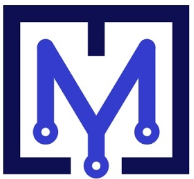Office Space Analytics: A Sensor-Based Guide

A Simple Guide to Office Space Analytics with Sensors
Understanding how your workplace is used is essential to creating a productive and efficient environment. Accelerometric sensor technology is the key to gathering this understanding. In this guide, we’ll walk through a step-by-step approach to office space analytics, showing how tools like MySeat’s solution make it easy to collect and use occupancy data to improve your workspace. By the end, you’ll see how data from tiny sensors can lead to big insights for your office.
1. Define Your Objectives
Start by clarifying your needs and goals for the space. Are you trying to free up underutilized areas? Increase employee comfort? Improve collaboration? Defining what success looks like will guide your analytics project. For example, you might set a goal to raise the usage rate of meeting rooms, or to ensure every team has access to quiet focus spaces. Identifying your primary objective at the outset is the first step toward building a higher-performing workplace.
2. Deploy Occupancy Sensors
Next, it’s time to gather data with smart tools. Occupancy sensors are at the heart of office space analytics. MySeat provides innovative accelerometer-based sensors that monitor how your spaces and furniture are used throughout the day. These small wireless devices attach to chairs, desks, and other resources to record interactions – for instance, when someone sits in a chair or uses a desk. They can even observe patterns like peak busy times or typical traffic flows in the office myseat.io. The sensors work silently and anonymously in the background, capturing essential usage information without disrupting anyone’s work. This technology is vital for collecting the hard data you’ll need for analysis.
3. Choose the Right Analytics Software
It’s not enough to collect data – you also need a way to analyze and visualize it. Select an analytics platform that meets your expectations and is user-friendly for your team myseat.io. The ideal software will turn complex data into clear insights, using dashboards and reports to highlight key metrics. MySeat’s platform, for example, offers a suite of analytics tools tailored to workplace data, from heatmaps of office utilization to charts of occupancy trends. When evaluating software, look for features like real-time monitoring, historical trend analysis, and customization options. The right tool makes it simple to interpret sensor data and spot opportunities for improvement.
4. Consult the Experts (If Needed)
If interpreting the data feels daunting, don’t hesitate to bring in an expert. Workplace analytics professionals or MySeat’s own consultants can provide valuable guidance tailored to your organization. An expert who understands your industry and company culture can help you focus on the most relevant data, avoid common misinterpretations, and suggest practical solutions. They’ll ensure you get the most out of your analytics project – translating raw numbers into meaningful actions specific to your reality. This collaboration can be especially useful for complex offices or when you have to make the case for changes to upper management.
5. Collect and Analyze Data
With sensors in place and software at the ready, it’s time to collect data and dive into analysis. Let the sensors observe your workplace for a sufficient period – it could be a few weeks or a couple of months, depending on how fine-grained you want your insights. During this phase, the sensors will quietly log numerous parameters in your spaces: which desks see the most use, what times meeting rooms are occupied, how often common areas fill up, and so on myseat.io. Once enough data is gathered, use your analytics software to identify patterns and trends. Look for peaks, lulls, and imbalances. For instance, you might find that a particular conference room is nearly always busy at 10 AM on Tuesdays, or that the lounge area is underused in the mornings. The goal is to turn raw data into a story of how work unfolds in your office. Are there bottlenecks or unused opportunities? The analytics will reveal them.
6. Implement Targeted Changes
Now comes the exciting part: making improvements based on your findings. Use the insights from your analysis to drive targeted changes in the office. If the data showed that employees avoid a certain corner of the office, perhaps it’s due to poor lighting or lack of equipment there – you can address that by adding lamps or monitors. If a meeting room is over capacity every afternoon, maybe it’s time to create additional collaboration spaces or implement a reservation system to spread usage. You might discover you need more soft seating in social areas, or that a cluster of rarely used desks could be converted into a much-requested brainstorming zone. Let the data guide your decisions so that any changes you implement are backed by evidence, thereby maximizing their impact.
7. Monitor and Adjust Continuously
The work doesn’t stop after one round of changes – a truly efficient workplace requires continuous fine-tuning. Keep monitoring the space and be prepared to adjust as needed . Workforce size, company needs, and team behaviors can evolve, so your space should too. MySeat’s tools make ongoing tracking easy, helping you see the effects of your interventions. Perhaps after your initial changes, overall occupancy balance improved, but a new issue cropped up (e.g., the cafe area is now overcrowded because it’s more appealing). Regular check-ins with the data will alert you to these shifts so you can respond proactively myseat.io. Think of it as a feedback loop: measure, implement, measure again. This ensures your workplace stays optimal over time, not just in the immediate aftermath of an audit.
8. Learn from Others
Don’t reinvent the wheel—take inspiration from other organizations that have successfully used workplace analytics. Study case studies and testimonials from companies that deployed MySeat or similar solutions myseat.io. Their successes and challenges can provide valuable lessons. For example, one company might share how they reduced their office footprint by 20% after discovering consistent underutilization, while another highlights improved employee satisfaction from creating new collaboration zones. These real-world stories can spark ideas for your own space and validate the power of data-driven decisions myseat.io. MySeat’s blog and resources often include such case studies, giving you a library of knowledge to draw from.
Conclusion
Office space analytics isn’t just a buzzword – it’s a concrete, measurable, and effective approach to evolving your workplace myseat.io. By defining clear objectives, deploying sensors, analyzing the data, and implementing informed changes, you take the guesswork out of office management. With MySeat (and tools like it), this process becomes accessible and powerful for organizations of any size myseat.io.
In summary, accelerometer-based sensors on furniture let you understand your office space better myseat.io. They gather data on occupancy and usage without ever identifying individuals, protecting privacy while delivering insight. Armed with these analytics, you can make intelligent, evidence-based decisions about how to allocate space, where to invest in new amenities, and how to create an environment where your team performs at its best myseat.io. It’s a straightforward way to save money, improve the employee experience, and even benefit the planet through more efficient use of resources myseat.io.
Ready to unlock the full potential of your workspace? Office space analytics with MySeat’s sensor technology is a great place to start. By embracing data, you’ll join the ranks of forward-thinking companies turning insight into action. So why wait? Explore how sensors and analytics can help you transform your office today – your future workplace will thank you for it.
(Learn more about effective office space optimization from this McKinsey report and see an example of accelerometer-based occupancy detection in this IEEE research article.)
